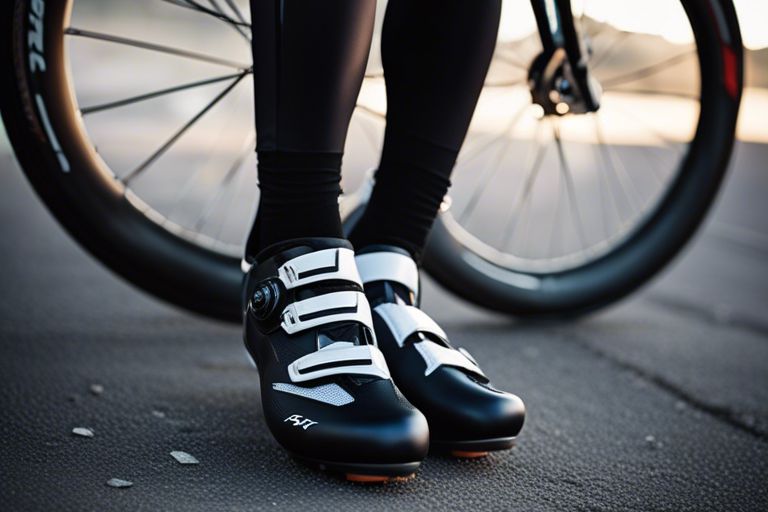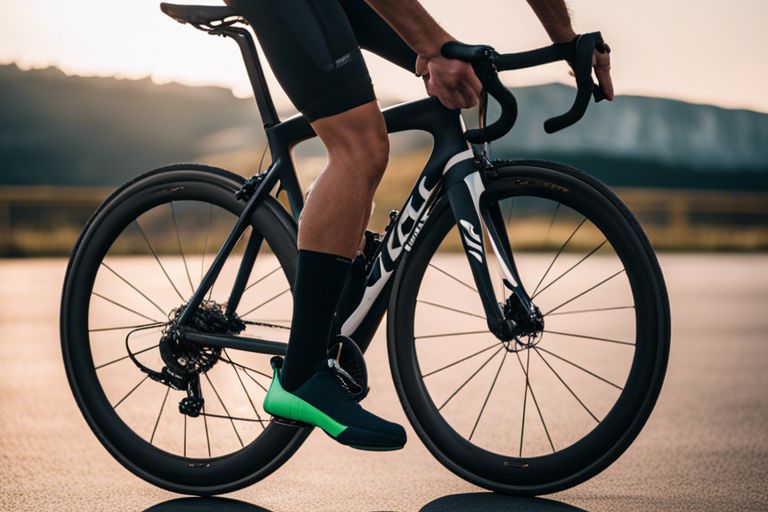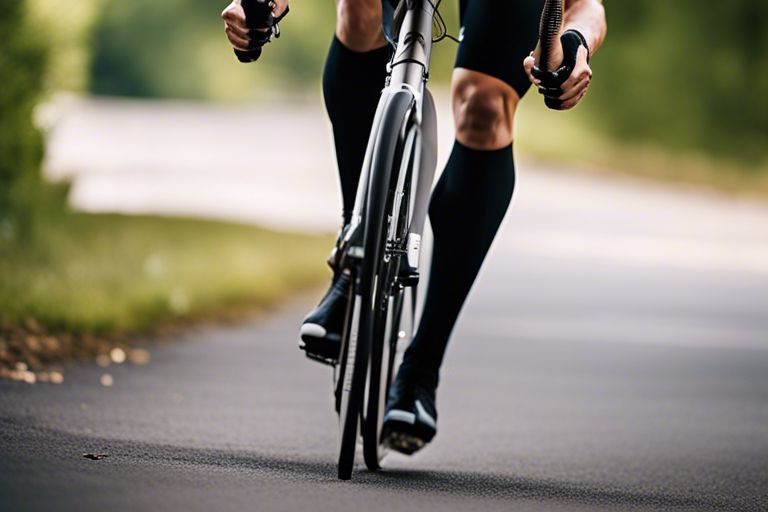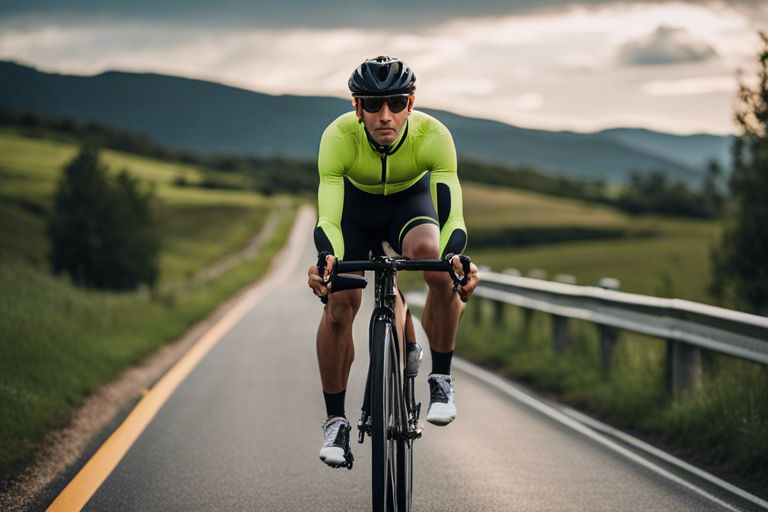Comfortable cycling shoes are vital for an enjoyable and effective ride. Whether you’re a casual rider or a seasoned cyclist, the right fit can make all the difference in your performance and overall experience on the bike. In this blog post, we will research into the key factors to consider when it comes to finding the perfect fit for your cycling shoes.

Key Takeaways:
- Snug fit: Cycling shoes should fit snugly to prevent any movement while pedaling, reducing the risk of blisters or discomfort.
- Toes should lightly touch the end: To ensure proper power transfer, your toes should lightly touch the end of the shoe without being squished.
- No pressure points: The shoes should not create any pressure points on your feet, particularly on the sides or top of the foot.
Understanding Cycling Shoe Sizing
The Importance of Accurate Measurement
To ensure optimal performance and comfort while cycling, proper fitting cycling shoes are crucial. Ill-fitting shoes can lead to discomfort, decreased power transfer, and even injury. Therefore, accurate measurement of your feet is the first step in finding the right cycling shoe size.
Differences in Sizing Standards
For cycling shoes, sizing can vary between brands and even models within the same brand. It is vital to remember that your cycling shoe size might be different from your regular shoe size. Factors such as the type of cycling you do, the shape of your feet, and personal preferences also play a role in determining the correct size.
Another consideration is the difference in sizing standards between countries, with European, US, and UK sizes often being used interchangeably. It is best to refer to each brand’s specific sizing chart and measurements to ensure an accurate fit.
Key Features of a Proper Fit
Any well-fitting cycling shoe should meet certain criteria to ensure optimal comfort and performance. Here are the key features to look out for:
- Snug but not tight fit around the heel and midfoot
- Adequate room for the toes to wiggle without hitting the front of the shoe
- No slipping or hotspots during pedaling
- Secure closure system to keep the foot in place
- Proper arch support to prevent discomfort and fatigue
Knowing these key features can help you identify whether a pair of cycling shoes is the right fit for you.
Length and Toe Room
With length and toe room, it is crucial to have enough space for your toes to move freely. The ideal fit should allow a bit of wiggle room for your toes without compromising the overall snugness of the shoe. Ensure there is about a thumbnail’s length of space between your longest toe and the end of the shoe.
Width and Foot Volume
Width plays a significant role in how comfortable your cycling shoes will be on the road. Plus, consideration of foot volume can impact the overall fit as well. If you have wider feet or a higher volume, look for brands that offer specific width options or models designed to accommodate a variety of foot shapes. A shoe that is too narrow can cause discomfort and numbness, while a shoe that is too wide can lead to instability and inefficient power transfer. Make sure to choose the width that suits your feet best for an optimal fit.

The Role of Closure Systems in Fit
Laces vs. Straps vs. Dials
Many cyclists wonder which closure system is best for cycling shoes. Each type – laces, straps, and dials – offers different advantages and considerations when it comes to fit and comfort.
Adjusting for Comfort and Performance
For optimal comfort and performance, it’s vital to adjust your closure system properly. Your cycling shoes should feel snug but not overly tight. You can fine-tune the fit by making small adjustments to ensure the shoe is secure and doesn’t cause any pressure points.
Additional Considerations
Arch Support and Insoles
On top of finding the right fit for your cycling shoes, consider the importance of arch support and the use of insoles. Proper arch support can significantly improve comfort and stability while cycling, and custom insoles can further enhance this support, especially if you have high arches or specific foot issues.
Accommodating Foot Dynamics While Cycling
Dynamics play a crucial role in how your feet interact with the pedals while cycling. Accommodating foot dynamics involves understanding how your feet move during each pedal stroke and ensuring that your shoes allow for natural movement patterns. This can help prevent discomfort, improve power transfer, and reduce the risk of injuries.

Maintaining and Adjusting Fit Over Time
The Effects of Shoe Stretching
Maintaining the fit of your cycling shoes over time is vital to ensure optimal performance and comfort. Over time, your shoes may stretch, particularly in areas where they experience the most pressure while pedaling. To adjust for this natural stretching, consider using a shoe stretcher. This tool can help maintain the shape and fit of your shoes, preventing discomfort and potential injury.
When to Consider a Re-fit or New Pair
With regular use, even the most well-fitted cycling shoes may need to be reevaluated. If you notice any discomfort, pressure points, or the feeling of your feet moving excessively within the shoes, it may be time to consider a re-fit or investing in a new pair of cycling shoes. A professional fitting at this stage can help address any changes in your feet or riding style that may have occurred since your last fit, ensuring you continue to get the most out of your rides.
Time
Time plays a crucial role in maintaining the fit of your cycling shoes. As you log more miles and your shoes undergo wear and tear, it’s important to regularly assess their fit and make adjustments as needed. Keeping a close eye on the condition of your shoes and how they feel during rides can help you identify when it’s time for a re-fit or a new pair, ultimately enhancing your cycling experience.
To wrap up
Hence, it is crucial to ensure that your cycling shoes fit properly to enhance your performance, reduce the risk of injury, and provide you with a more comfortable riding experience. Remember to consider factors such as sizing, width, arch support, and closure system when selecting the right pair of shoes. By paying attention to these aspects, you can enjoy all the benefits that properly fitting cycling shoes have to offer.
FAQ
Q: How should cycling shoes fit?
A: Cycling shoes should fit snugly without being too tight. Your toes should have a little room to wiggle, but your heel should not lift up when pedaling. Make sure there are no pressure points or areas that rub against your feet.
Q: How do I determine the right size for cycling shoes?
A: To find the right size, measure your foot length and width. Use the sizing chart provided by the shoe manufacturer and consider trying on different brands as sizing can vary. Note, your cycling shoe size may be different from your regular shoe size.
Q: What should I consider when trying on cycling shoes?
A: When trying on cycling shoes, wear the same type of socks you would normally wear while riding. Walk around and mimic a cycling motion to ensure a comfortable fit. Check for any pressure points, heel slippage, or toes hitting the front of the shoe. Make sure the closure system allows for a secure fit.




